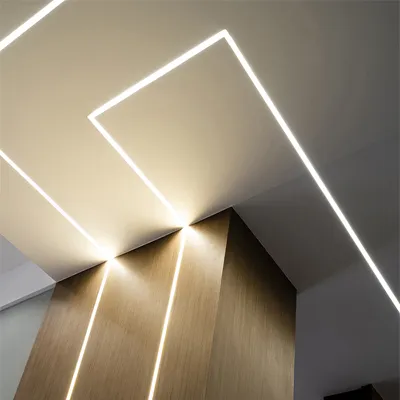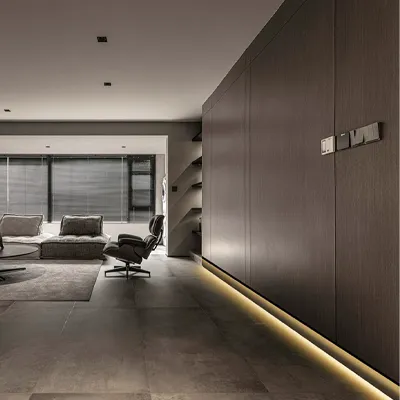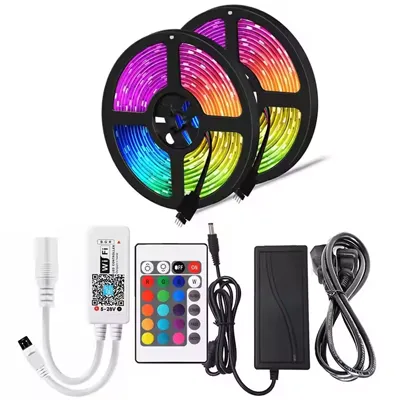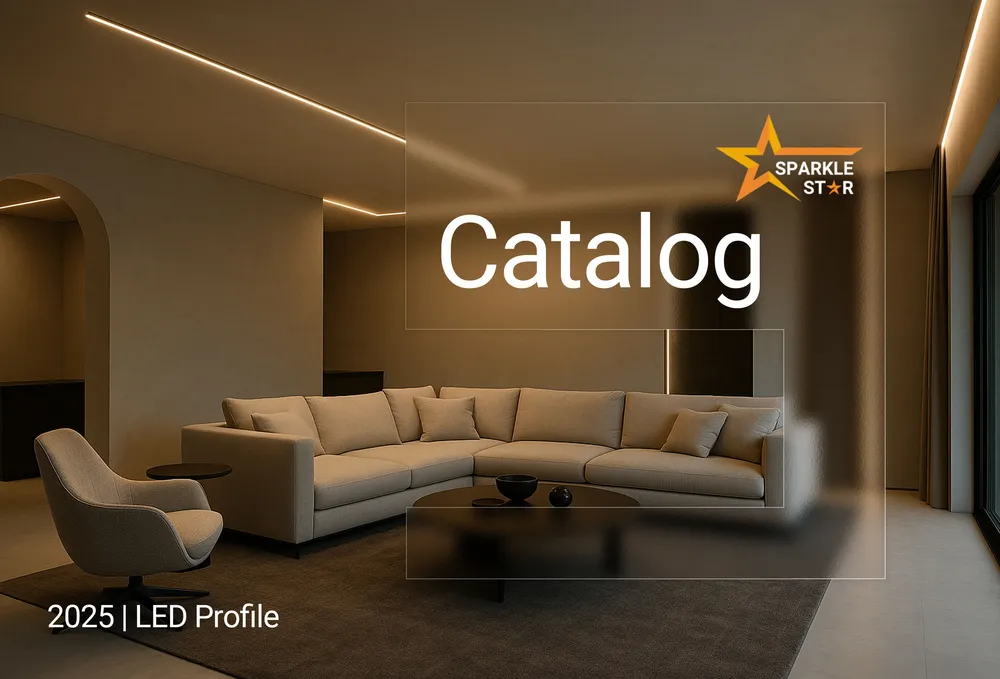
LED strip lights have become a cornerstone of modern lighting design. However, the term actually covers a vast and diverse range of products. When you first start looking, the terminology can be confusing. For instance, you might see acronyms like SMD, COB, RGBW, and IP65. This guide is designed to clarify the confusion. It will systematically break down the different types of LED strip lights based on their core technical characteristics. Ultimately, its goal is to provide a clear understanding of the technology so you can identify the right product for any application.
1. Categorization by Color Output
Above all, the most fundamental way to classify different kinds of LED strip lights is by the color of light they produce. This choice determines the entire visual mood of your project.
Single Color LED Strips Firstly, this is the most basic and common type. These strips are engineered to produce light in just one static, consistent color. This includes various shades of white—for example, warm white, neutral white, or cool white. Moreover, it also includes monochromatic colors like red, green, blue, or amber. They are a cost-effective and reliable choice for general ambient lighting.
Tunable White (CCT) LED Strips In addition, there are CCT (Correlated Color Temperature) strips. These offer dynamic control over the shade of white light. They contain both warm white and cool white LEDs on the same strip. This allows the user to blend them, producing a range of color temperatures. In other words, you can change the light from a warm, cozy candlelight (around 2700K) to a cool, energizing daylight (around 6500K).
RGB & RGBW LED Strips RGB strips use three base chips (Red, Green, and Blue) to mix and create a wide spectrum of colors. However, there is an advanced version called RGBW, which adds a dedicated white chip.
Technical Note: The addition of a dedicated white chip in an RGBW strip allows for a much purer and higher quality white light. The composite white created by mixing R, G, and B can often look slightly blue or pink. Therefore, RGBW is ideal for spaces that require both vibrant color and functional white lighting.
2. Categorization by Operating Voltage
Next, all LED strip lights operate on low-voltage Direct Current (DC). The operating voltage is a critical specification. Most importantly, it impacts the project's design, particularly the maximum continuous length you can run a strip before encountering voltage drop.
Voltage Drop :Think of voltage like water pressure in a long garden hose. The pressure is strongest near the faucet but gets weaker at the far end. Similarly, in a long LED strip, the voltage decreases along its length. This causes the LEDs at the far end of the strip to appear dimmer than those at the start.
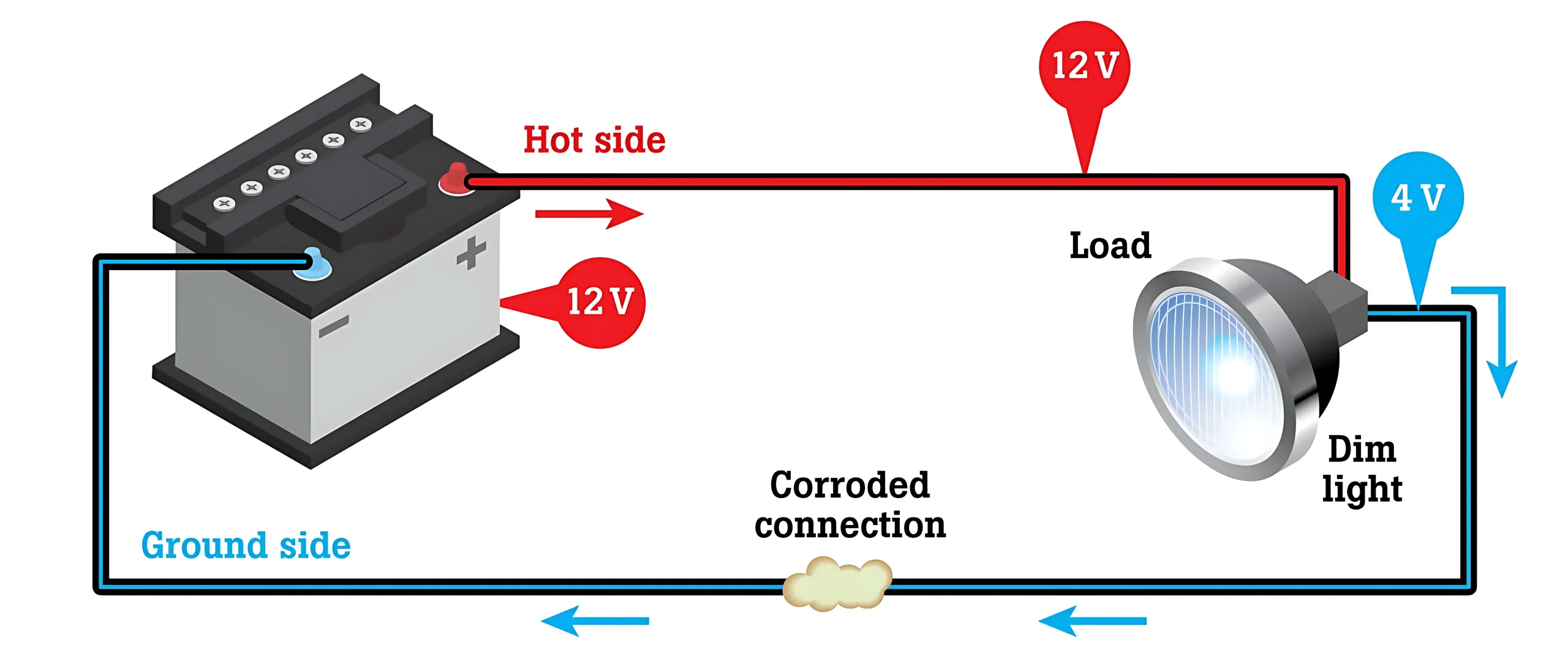
The two industry standards are 12V DC and 24V DC. A 24V system is like having higher initial water pressure; it can push the electricity further down the strip before it weakens. Consequently, 24V allows you to run a strip twice as long as a 12V strip with the same level of voltage drop, making it the preferred standard for longer installations.
3. Categorization by LED Density
Subsequently, we look at LED Density. This refers to the number of individual LED chips per meter (or foot) of the strip. This specification directly correlates with the strip's brightness and the smoothness of its light output. To clarify, higher density means more light and fewer visible "dotting."
Density Tier | Typical LEDs per Meter | Primary Characteristic |
|---|---|---|
Standard Density | 30 - 60 | Economical, suitable for accent or indirect lighting |
High Density | 120 - 240 | Very bright, more uniform light line. Good for task lighting |
Ultra-High Density | 240+ / COB | Extremely bright, produces a nearly seamless line of light |

4. Categorization by LED Chip Type: A Tale of Two Technologies
The actual chip technology used is one of the most important factors that define the different types of LED strips.
SMD (Surface Mounted Device) Firstly, this is the most established and widespread technology. It involves mounting individual, pre-packaged LED chips (for instance, the 2835 or 5050 models) onto the surface of the flexible circuit board. These are the visible "dots" you see on most traditional LED strips.
COB (Chip on Board) On the other hand, COB is a newer technology. It involves bonding hundreds of tiny, bare micro-chips directly onto the circuit board. These are then covered by a continuous layer of phosphor. As a result, this method creates a single, seamless, and completely uniform line of light without any visible dots.
If you would like to learn more about the detailed differences between COB and SMD, you can read this article.
5. Categorization by Waterproofing (IP Rating)
Further, when selecting from different types of LED strip lights, you must consider the installation environment. The IP rating determines a strip's suitability for different locations.
IP Rating:IP stands for Ingress Protection. It's a universal standard that uses two numbers to grade a product's resistance to intrusion. The first digit (0-6) rates protection against solid objects like dust. The second digit (0-8) rates protection against liquids like water. Therefore, a higher number means better protection.
Here are the most common ratings:
- IP20 / IP33: Non-waterproof. For use in dry, indoor environments only, such as bedrooms and living rooms.
- IP65: Splash-proof. A silicone coating protects against splashes. Suitable for kitchens and bathrooms but away from direct water flow.
- IP67 / IP68: Fully waterproof. Encased in silicone tubing (IP67) or fully injected with silicone (IP68), allowing for use outdoors or even temporary submersion.
6. Categorization by Special Features
Finally, some strips are defined by their unique, specialized functions. These kinds of LED strips are designed for specific, high-performance applications.
High-CRI Strips
CRI stands for Color Rendering Index. It measures how accurately a light source reveals the true colors of objects. A standard LED strip might have a CRI of around 80. In contrast, a High-CRI strip (CRI 90+) renders colors much more faithfully and vividly. This is certainly critical for retail, art galleries, and closets.
Addressable (Pixel) Strips
Unlike standard RGB strips where the entire length must be the same color, addressable strips contain integrated circuits (ICs). These allow for individual control of each LED or a small section of LEDs. In other words, this is the technology that enables dynamic, color-chasing, "rainbow" effects.
Conclusion
In conclusion, the "type" of an LED strip light is not a single characteristic but a combination of these six key attributes. To sum up, understanding this classification system—from color output and chip technology to environmental protection—provides the fundamental knowledge needed to navigate the world of linear lighting. This knowledge empowers you to understand and specify the correct product for any technical application.
Frequently Asked Questions (Q&A)
1. What do the numbers like '5050' or '2835' on an SMD strip mean?
These numbers refer to the physical dimensions of the individual SMD chips. For example, a "5050" chip is 5.0mm by 5.0mm wide. Generally, a larger chip size allows for a higher potential brightness, but modern, smaller chips can be very efficient as well.
2. Is a 24V strip brighter than a 12V strip?
No. At the same LED density and power rating, a 12V strip and a 24V strip will have the same brightness. The primary advantage of 24V is its ability to run for longer distances with less voltage drop, not higher brightness.
3. Can I connect different types of LED strip lights together?
It is strongly discouraged unless you are an expert. You should never connect strips with different voltages (e.g., 12V to 24V) as it will destroy the lower voltage section. Similarly, connecting different color types (like RGB to Single Color) is not practical as they require different controllers and wiring.


